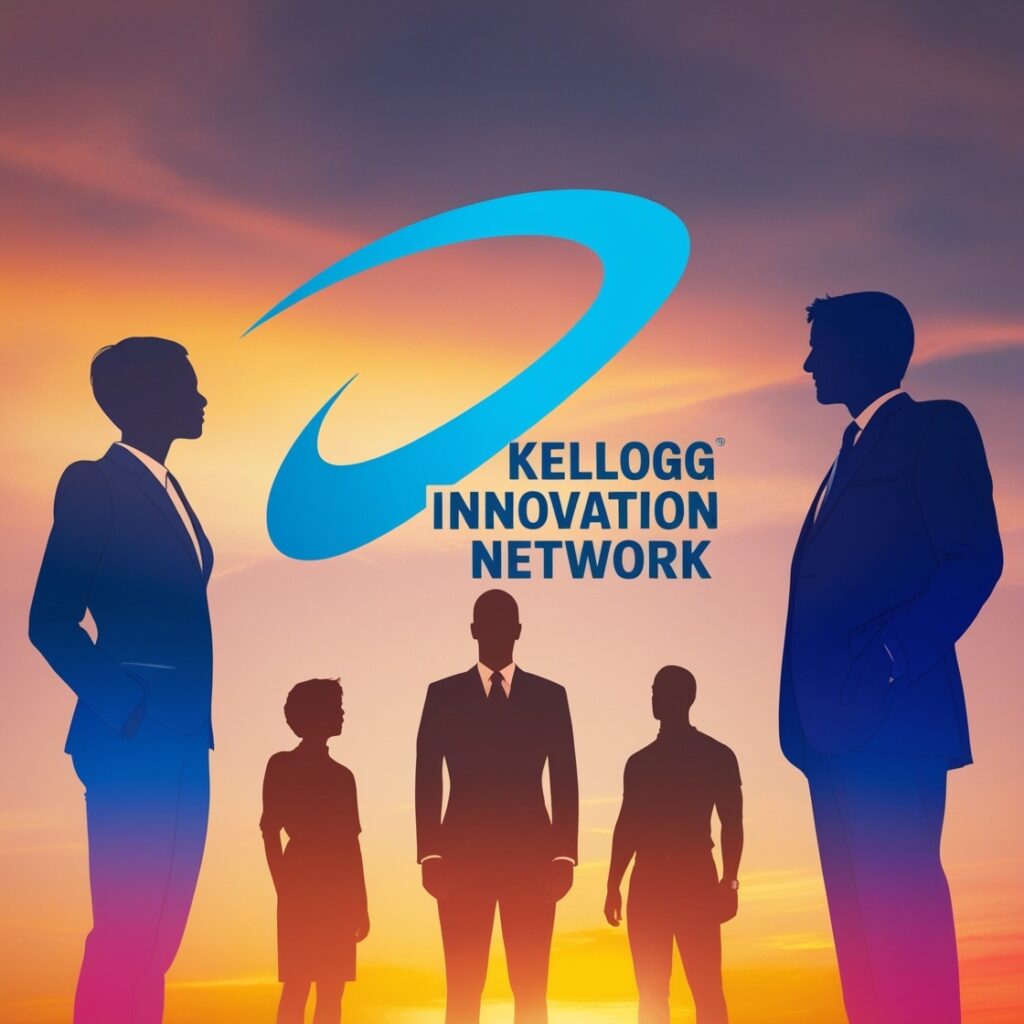
Kellogg Innovation Network (KIN)
In today’s fast-evolving world, innovation is not just a buzzword; it’s the backbone of how businesses thrive. The Kellogg Innovation Network (KIN) is a great example of how organizations foster innovation in practical, actionable ways. Born out of Northwestern University’s Kellogg School of Management, KIN is more than just an initiative—it’s a platform for business leaders, academics, and entrepreneurs to connect, share ideas, and build solutions that address some of the world’s most pressing challenges.
This article delves into the workings of the Kellogg Innovation Network, its unique approach to problem-solving through innovation, its alignment with strategic frameworks such as the Functional Quality Assurance System (FQAS), and the impact it creates.
What is the Kellogg Innovation Network?
KIN started as a bridge between the business and academic worlds, recognizing that true innovation comes from diverse perspectives and collaboration. It creates a space where leaders can explore new ideas and test unconventional strategies while keeping real-world challenges in mind.
Unlike many think tanks that operate in theoretical silos, KIN is hands-on. It draws on Kellogg’s long-standing reputation for excellence in business strategy, marketing, and leadership to enable problem-solving that is both practical and impactful. Its focus lies in fostering creative risks, a philosophy captured by Kellogg’s emphasis on the necessity of bold experimentation to drive change.
KIN emphasizes human-centered approaches to business problems. It’s about asking the tough questions: What does the market really need? How can we deliver solutions that not only make profits but also make a difference?
KIN’s Approach to Innovation
KIN operates on three pillars:
- Collaborative Networks: By bringing together professionals from different industries, KIN ensures that no idea exists in isolation. For instance, a healthcare leader might gain valuable insights from a tech entrepreneur about enhancing patient care using AI.
- Cross-Disciplinary Learning: A core belief at KIN is that some of the best ideas come from outside traditional fields. Leaders are encouraged to draw inspiration from art, philosophy, science, and other disciplines.
- Real-World Application: KIN doesn’t stop at brainstorming. Instead, it ensures that discussions lead to actionable strategies that can be implemented on a global scale.
The network has supported innovations in areas like sustainability, digital transformation, and leadership resilience. For example, its work in reshaping marketing practices has influenced how businesses like Kellogg’s approach creative effectiveness and audience engagement.
The Functional Quality Assurance System (FQAS): A Strategic Alignment
To understand how KIN structures its innovation efforts, we must look at frameworks like the Functional Quality Assurance System (FQAS). This system ensures that organizations balance creativity with structure. In KIN’s context, FQAS serves as a guiding principle to manage ideas from inception to execution.
Core Components of FQAS in KIN
- Goal Alignment: Every project within KIN is aligned with clear, measurable objectives. This ensures that the creativity generated within the network has a purposeful direction.
- Feedback Loops: At KIN, feedback isn’t an afterthought—it’s integrated at every stage of the innovation process. Leaders regularly reassess strategies to ensure they remain relevant.
- Resource Optimization: FQAS allows KIN to maximize its resources, ensuring that time, funding, and expertise are allocated where they are most needed.
By integrating FQAS principles, KIN ensures that its groundbreaking ideas are not only inspiring but also achievable.
KIN in Action: Success Stories
The success of KIN can be seen in the tangible results it delivers:
- Advancing Sustainability Practices: KIN has been pivotal in reshaping how companies approach environmental challenges. By connecting experts in manufacturing with sustainability advocates, it has helped businesses adopt greener practices.
- Redefining Marketing: As highlighted in their collaborations with major brands, KIN’s focus on creative risk-taking has led to innovative marketing campaigns that are not just effective but also resonate deeply with audiences.
- Leadership Development: Through seminars and workshops, KIN fosters leaders who are adaptable and equipped to navigate uncertainty.
One of KIN’s notable projects involved guiding a food company through the integration of digital tools in its supply chain. This initiative not only improved operational efficiency but also reduced waste, aligning with the company’s sustainability goals.
Challenges and the Way Forward
Like any initiative, KIN isn’t without its challenges. Maintaining a balance between creativity and practicality can be difficult, especially when working with diverse industries and perspectives. Additionally, ensuring that all stakeholders are equally engaged requires significant effort.
To address these challenges, KIN is doubling down on inclusivity. By expanding its reach to underrepresented industries and regions, it aims to bring even more voices to the table. Additionally, it continues to refine its processes to make them more adaptable to the fast-changing global business environment.
Conclusion
The Kellogg Innovation Network is a testament to the power of collaboration and bold thinking. By creating a space where ideas are not just born but nurtured and executed, it is setting a new standard for what innovation can achieve.
Through frameworks like FQAS, KIN ensures that its ambitious projects have the structure and support they need to succeed. Whether it’s reshaping industries or tackling global issues, KIN proves that with the right tools, networks, and mindset, no challenge is too great.
As the world faces increasingly complex problems, platforms like KIN will be essential in finding solutions that are both innovative and practical. It’s not just about thinking outside the box—it’s about building a new box altogether.
FAQs on Kellogg Innovation Network (KIN)
- What is the Kellogg Innovation Network (KIN)?
KIN is a collaborative platform bringing together Kellogg faculty, corporate innovation leaders, nonprofits, and government organizations to foster innovation and drive solutions for complex global challenges. - What is the main purpose of KIN?
The primary goal of KIN is to promote ongoing collaboration and create innovative approaches to business and societal issues while encouraging cross-disciplinary learning and practical solutions. - Who can participate in KIN?
Participation is open to a mix of stakeholders, including academic experts, corporate leaders, government representatives, and nonprofit professionals, ensuring diverse perspectives in tackling challenges. - How does KIN drive innovation?
KIN fosters innovation through activities such as workshops, seminars, and collaborative projects. These initiatives focus on real-world applications of innovative ideas and encourage creative risk-taking. - What are some of KIN’s key activities?
KIN hosts events that connect participants with experts across various industries. The focus is on sustainability, leadership development, and integrating technology into business practices. - How does KIN ensure the practical application of ideas?
The network emphasizes structured frameworks, such as functional quality assurance systems, ensuring that ideas developed within KIN are feasible, scalable, and impactful. - Where is KIN based?
KIN operates under the Kellogg School of Management at Northwestern University, leveraging the institution’s global expertise and resources




Nice good work